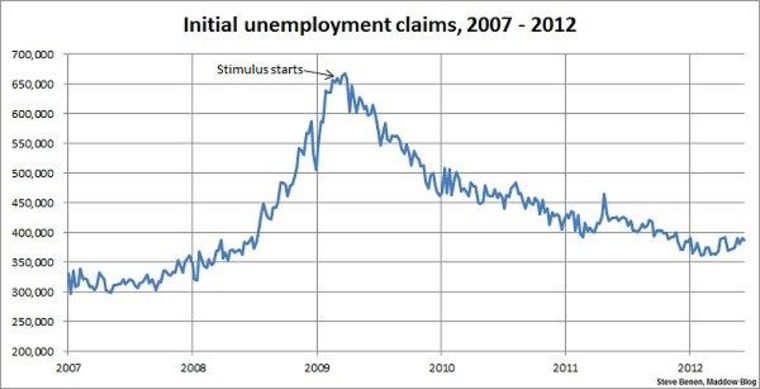At this point, it's almost a relief when initial unemployment claims simply fail to go up. Call it the soft bigotry of low expectations, but today's report from the Department of Labor this morning at least didn't deliver more bad news.
Though revisions once again pointed in the wrong direction, at least the new totals inched lower, not higher.
The number of Americans who filed requests for jobless benefits fell by 2,000 last week to 387,000, indicating little change in labor-market conditions. Claims from two weeks ago were revised up to 389,000 from 386,000, according to U.S. Labor Department data. Economists surveyed by MarketWatch had projected claims would fall to a seasonally adjusted 385,000 in the week ended June 16. The average of new claims over the past four weeks, meanwhile, climbed by 3,500 to 386,250, marking the highest level in almost seven months.
To reiterate the point I make every Thursday morning, it's worth remembering that week-to-week results can vary widely, and it's best not to read too much significance into any one report.
In terms of metrics, when jobless claims fall below the 400,000 threshold, it's considered evidence of an improving jobs landscape, and when the number drops below 370,000, it suggests jobs are being created rather quickly. We've only managed to dip below the 370,000 threshold once in the last 11 weeks, and for four consecutive weeks, we've seen 380,000 or more.
Wouldn't it be nice if Congress could pass a jobs bill?
And with that, here's the chart showing weekly, initial unemployment claims going back to the beginning of 2007. (Remember, unlike the monthly jobs chart, a lower number is good news.) For context, I've added an arrow to show the point at which President Obama's Recovery Act began spending money.
